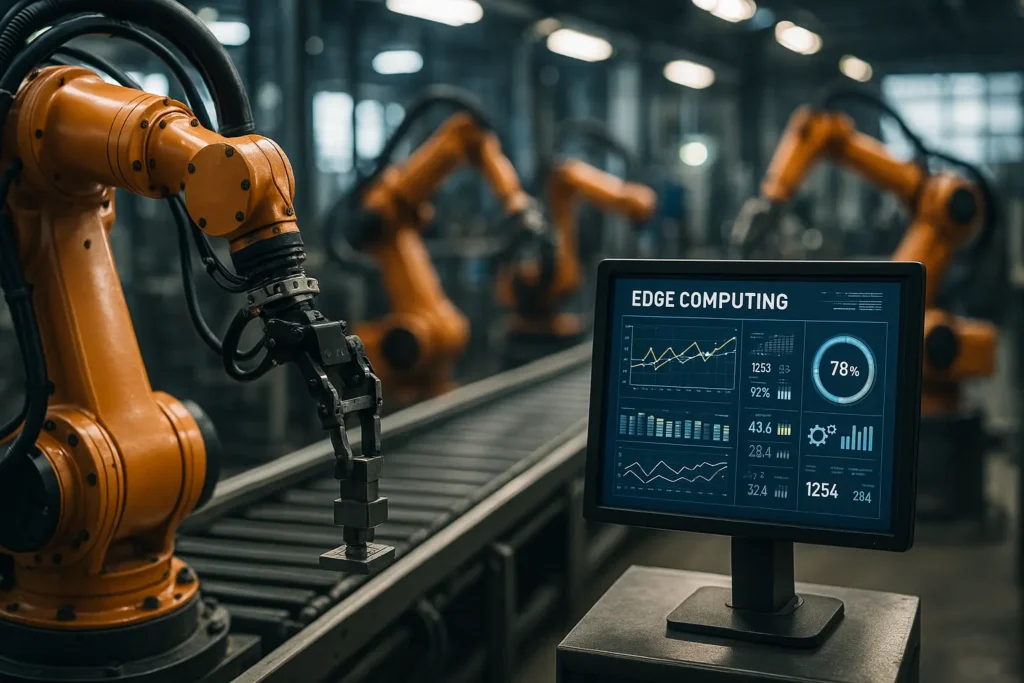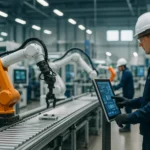In an age where industrial automation is rapidly evolving, the marriage of edge computing and automation introduces a transformative shift in how industries operate. We’ve entered a new chapter where real-time data processing at the edge can redefine the entire scope of manufacturing and production. Our challenge lies in understanding this bold frontier, where machines don’t just react but anticipate, adapt, and optimize processes like never before. Through this lens, we explore how edge computing is reshaping the industrial landscape, empowering businesses with unprecedented efficiency and control.
Understanding Edge Computing: The Catalyst for Change
Edge computing has emerged as a pivotal force in transforming the industrial automation landscape. Unlike traditional cloud computing, which processes data at a central server, edge computing allows data to be processed closer to our devices and machinery. This proximity reduces latency, enabling real-time decision-making essential for mission-critical operations.
By incorporating edge systems, we can enhance the capabilities of our IoT networks, accommodating the deluge of data generated by modern manufacturing equipment. This shift is crucial in industries where the timeliness of data processing can directly impact production outcomes. By leveraging edge computing, we can achieve more seamless integration of automation systems, ensuring that machines function harmoniously within their operational contexts.
Furthermore, edge computing offers a unique approach to enhancing security. With data processed locally, the risk of exposing sensitive information to external hacking threats diminishes. This security measure is vital in protecting both our network and proprietary industrial processes.
Edge computing also plays an instrumental role in optimizing efficiency. By processing data on-site, we reduce the bandwidth strain on corporate IT infrastructure, ensuring that resources are utilized effectively. This dynamic approach not only minimizes downtime in production but also significantly improves the reliability of control systems.
Revolutionizing Industrial Automation
The power of edge computing is particularly evident in industrial automation, where every second matters. By utilizing edge devices, we can monitor and control manufacturing processes with increased precision and speed. The capacity to process data as events occur enables us to react instantaneously to changes on the production floor, making adjustments in real-time, and maintaining the integrity of the entire system.
In industries that rely on machine learning and predictive analytics, edge computing provides the necessary infrastructure to enhance performance. By integrating sophisticated algorithms directly into equipment, we can predict maintenance needs, preemptively address potential failures, and optimize workflow. These advancements contribute to the development of a self-sustaining, intelligent manufacturing ecosystem.
Additionally, edge computing supports the automation of complex tasks, reducing the need for human intervention and minimizing errors. This leads to improved productivity and lower operational costs, providing a competitive edge in a rapidly evolving market. By embracing this technology, we can ensure that our manufacturing processes remain at the forefront of innovation.
The shift from cloud-centric to edge-centric architectures empowers us to harness local computing power, enabling faster response times, greater scalability, and improved processing capabilities. With edge computing, the dream of a fully automated industrial environment is not just a possibility; it’s an imminent reality.
The Edge: A Future-Facing Approach
As we look towards the future, the role of edge computing in industrial automation promises to become more profound. The integration of edge computing is driving the development of intelligent systems capable of self-optimizing and adapting to evolving industrial needs. This adaptability is crucial as we navigate the complexities of modern manufacturing environments.
Our journey into the world of edge computing is propelled by the demand for more efficient and secure systems that can handle the increasing volume of data generated by IoT devices. By processing data on-site, edge computing provides an agile response to the dynamic conditions of the industrial sector, paving the way for a more resilient and adaptive production environment.
Moreover, the decentralization of data processing at the edge ensures a higher degree of reliability in network operations. It also supports the adoption of cutting-edge technologies such as augmented reality for maintenance tasks and machine learning models that improve operational excellence. These advancements underscore the critical importance of edge computing in sustaining the growth and evolution of industrial automation.
As we continue to embrace this technology, we recognize its potential to reshape industrial landscapes, creating a future where innovation and productivity harmonize seamlessly. Edge computing is the linchpin in enabling real-time insights, fostering a new era of manufacturing innovation.
In our exploration of edge computing’s role in industrial automation, we’ve witnessed its transformative potential to redefine how industries operate. From enhancing efficiency and security to enabling real-time data processing, edge computing is revolutionizing the way we interact with information and technology.
As we stand on the brink of further advancements, the integration of edge computing into our production systems is not just an option; it’s an imperative. By leveraging this technology, we have the opportunity to unlock unprecedented productivity, advance our network infrastructures, and maintain a competitive edge in the global market.
The path forward is clear: embrace the edge revolution, and together, let’s build a future where industrial automation is not just a dream but a vibrant reality. Innovation awaits those ready to take the leap.
FAQ
What is edge computing and how does it differ from traditional cloud computing in industrial automation?
Edge computing processes data closer to the source of data generation, such as machinery or sensors, rather than relying on centralized data centers. This approach reduces latency, enhances real-time decision-making, and improves the efficiency of industrial automation systems, unlike traditional cloud computing that involves data transmission to remote servers.
How does edge computing contribute to improved efficiency in industrial automation?
By processing data locally, edge computing minimizes latency, resulting in faster response times and more efficient operations. This is crucial for industrial automation systems that require real-time monitoring and control to optimize processes, reduce downtime, and improve overall productivity.
What are the security benefits of implementing edge computing in industrial automation?
Edge computing enhances security by minimizing the need to transfer sensitive data over networks to centralized cloud servers. Data is processed and stored locally, reducing potential exposure to cyber threats and providing better control over data management and access.
Can edge computing support predictive maintenance in industrial automation?
Yes, edge computing is instrumental in predictive maintenance by enabling real-time data analysis directly at the source. By continuously monitoring equipment conditions and performance, it can predict potential failures and schedule maintenance proactively, reducing unexpected downtimes and maintenance costs.
What are the challenges associated with integrating edge computing into existing industrial automation systems?
Integrating edge computing can be challenging due to compatibility issues with legacy systems, the need for specialized hardware and software, and the requirement for skilled personnel to manage and maintain these systems. Additionally, ensuring seamless data integration and connectivity across diverse devices and platforms can be complex.



